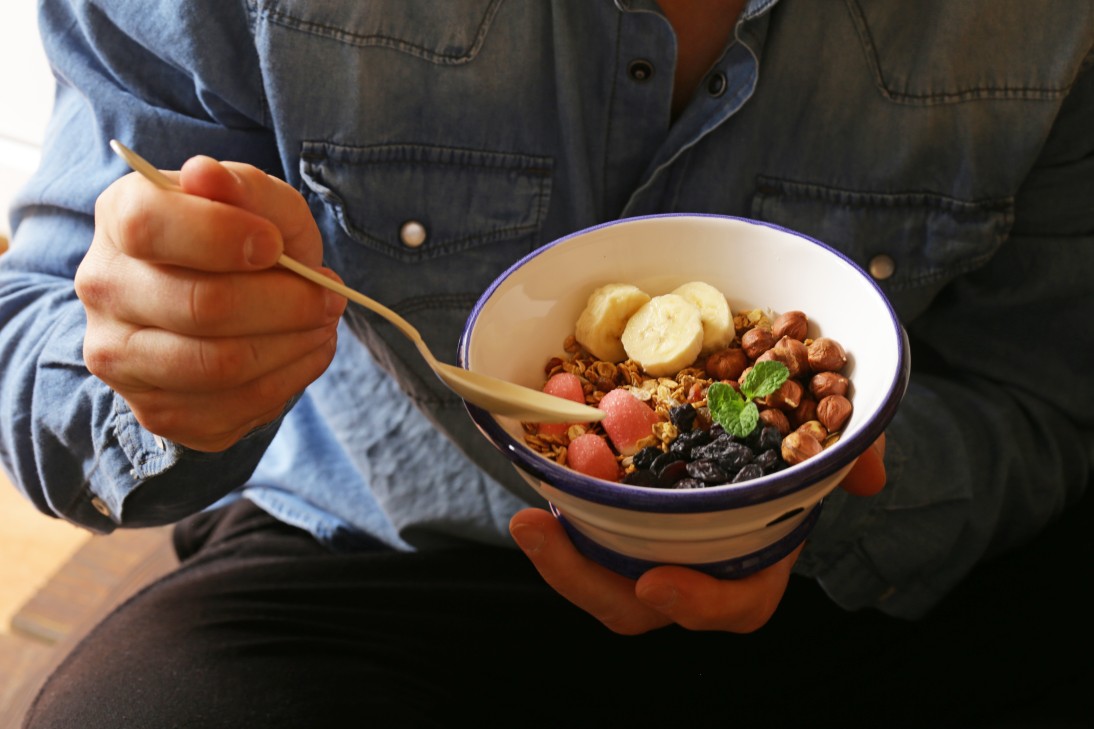Fiber is a watchword for anyone working on improving their diet and their overall health. Getting too much can make you miserable, but not getting enough can make you sick. To keep your gut healthy, the variety of fiber you take in matters nearly as much as the mg count.
Technically, yes. Too much fiber without enough water can lead to dangerous blockages, and too much roughage can lead to bloating, gas and discomfort. The key to changing your fiber intake may be to think about absorption and gut health.
Soluble Fiber Vs. Insoluble Fiber: The Breakdown
Soluble fiber is broken down in the digestive process and improves the bacterial variety in your gut. Having a lower intestine with a healthy variety of bacteria lowers your risk of heart disease, high blood pressure and diabetes.
Insoluble fiber is the roughage that doesn’t break down. Beans, often the source of digestive jokes, are high in both soluble and insoluble fiber. Berries, cruciferous vegetables and whole wheat flour are also excellent sources of insoluble fiber.
What’s My Target?
Men and women have different fiber needs, and we need less fiber as we age. To make sure that your gut is functioning effectively,
- men under 50 should aim for 38 grams a day
- men over 50 should aim for 30 grams a day
- women under 50 should aim for 25 grams a day
- women over 50 should aim for 21 grams a day
The key to avoiding the discomfort of a fiber overload is to build up slowly.
A Matter of Degrees
To slowly increase your fiber intake, you may need to take a daily supplement to get things moving. However, if you want to leave the supplements behind, you can try increasing your consumption of roughage at each meal.
For example, you can have a cup of bran flakes and a banana for breakfast, which would provide 8 grams of fiber to start your day. Have an apple mid-morning for 5 more grams, then for lunch, consider a baked potato with broccoli and cheese for 10 more grams. Almonds as a snack in the afternoon would give you 3 more grams, and a salad of mixed greens (including spinach and cabbage) with whole wheat pasta lasagna for even more fiber, depending on the size of your meal.
Be gentle with your fiber intake and always pair it with water. If you have had a problem with constipation or hemorrhoids in the past, consider including a little raw produce with each meal to slowly ramp up your fiber intake.
When You’ve Overdone It
If you’re not used to a lot of dietary fiber and you do overdo it, back off the supplements and go easy on your gut. Most people who suffer an overload of fiber do so with fiber drinks and blended supplements. Drink plenty of water and consider adding applesauce to your diet. Applesauce is high in pectin and is a terrific way to soothe an irritated gut.
Get some exercise if at all possible to let gravity and motion help your gut clear of a fiber overload, then return to your regular diet with that addition of regular roughage from raw fruits and vegetables. Even citrus fruits contain fiber, though not as much as a crunchy apple or some crisp celery, so you can enjoy your favorites and still add a bit of fiber to each meal.
If you’re already getting enough fiber, the risk of ingesting too much is small. However, if your fiber intake is low and you start on a regimen of supplements, it is possible to shock your digestive system with too much fiber. Make certain that you increase your water intake with prescribed fiber supplements.






